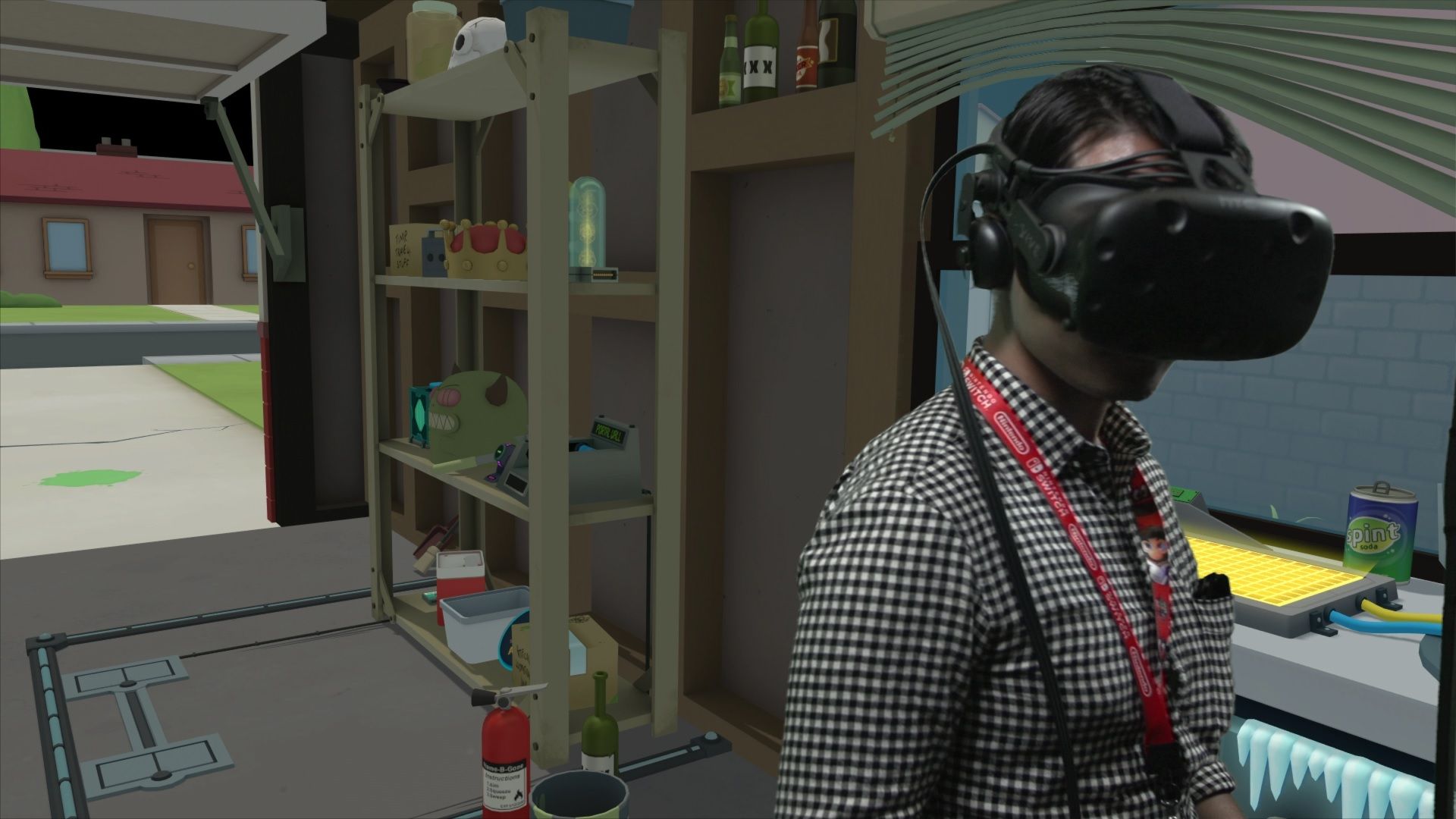Intel Showcases Skylake-X Capabilities In Mixed Reality Streaming

Intel announced its plans to release Kaby Lake-X and Skylake-X processors during CES, shortly after AMD’s ThreadRipper reveal. We got a chance to check out the 12-core Intel Core i9-7920X in action during a mixed reality demo of Rick and Morty: Virtual Rick-ality by Owlchemy Labs.
What is mixed reality, when it comes to demos? Basically, it’s when you overlay footage of the physical world on top of VR recordings. Typically, captured VR footage depicts only a first-person view, but with Unity, you can illustrate four panels in desktop view. This allows you to cast not only a first-person perspective in one panel, but also a third-person perspective and the alpha channel. A separate camera and green screen can then capture footage of the player in the physical world, and using MixCast to align the physical camera with the software camera overlays an image of the player in the virtual world.
That’s all swell, but you need plenty of system resources to be able to render mixed reality efficiently. You have to keep the game running at 90FPS for an optimal visual experience while capturing physical footage. Additionally, because the desktop image is divided into four panels, you would need a 4K monitor to view each individual panel at FHD. Couple that with players who want to stream their footage, and you’ve got yourself a taxing workload.
One method used by streamers to deal with the workload is utilizing two systems; the primary system is configured with a decent CPU and GPU, which are responsible for rendering the gameplay, capturing the physical footage, and overlaying it on top of the third-person game perspective. The secondary system contains a CPU and is used solely for streaming. However, Intel posits that you really need only one CPU, and therefore only one system, to run mixed reality well. Intel’s suggestion, of course, is its new Skylake-X platform.
To demonstrate Skylake-X’s prowess, Intel showed us Rick and Morty: Virtual Rick-ality and captured physical footage of us playing the game to use in mixed reality. The system contained an Intel Core i9-7920X, an Nvidia GeForce GTX 1080, and 32GB of DDR4 memory. Virtual Rick-ality requires, at a minimum, a Core i5-4590 with a GTX 970 to run adequately, but streamers use CPUs with more cores, such as an i7, to produce better streaming playback. If we were to take Intel at its word, then even an i7 will struggle when adding mixed reality to the, er, mix.
We donned a Vive headset and were promptly teleported into Rick and Morty’s garage, where we got to play around with various handheld objects. Our mixed reality footage briefly displays the CPU utilization chart, which shows utilization rates under 60%. However, the chart was obscured during most of the video’s duration, so we don’t know if the utilization rate exceeded 60% at any point. Also, the system wasn’t streaming the footage (which partially defeats the purpose of this demo), so the i9-7920X wasn’t handling as tough of a workload. If, however, the sub-60% utilization proves to be accurate, this means that the 12-core i9 has a decent amount of headroom to work with.
Intel has released the Core i9-7900X, and additional Skylake-X CPUs are on the horizon. Rick and Morty: Virtual Rick-ality is currently available on Steam and Oculus Home.